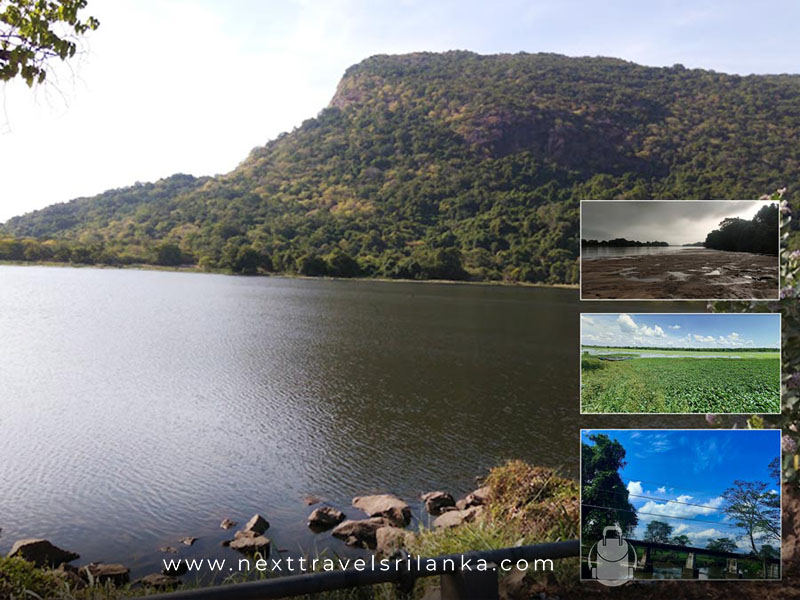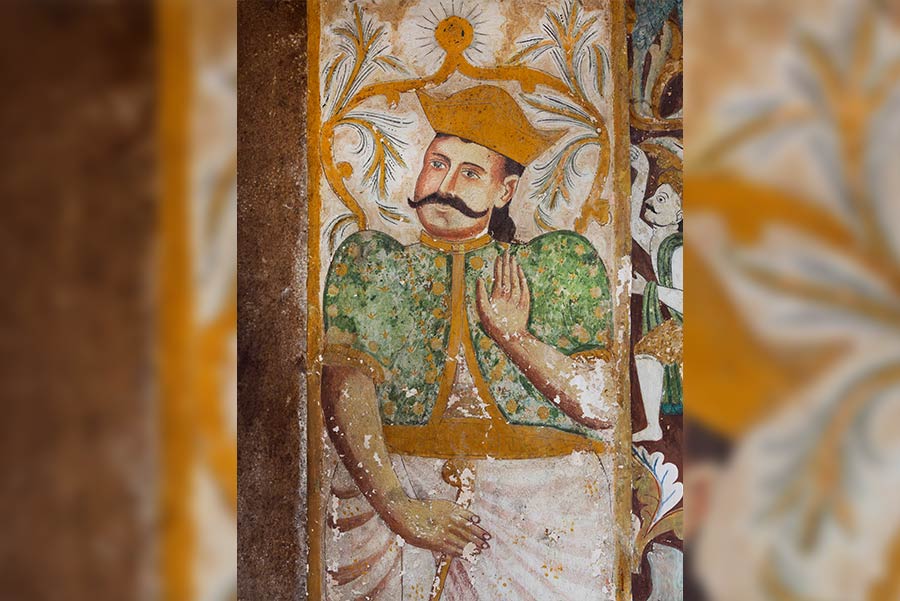
Sri Lanka, the magical island nation settled amidst the blue waves of the Indian Ocean, is blessed with an abundance of greenery. Many of those areas that hold unique features are declared as National Parks, by the Sri Lankan authorities. The Flood Plains National Park is a national park as such, that is less popular, yet rich with biodiversity. To stride through the grassy lands destining to ferny brooks, the Flood Plains National Parks will render you an awesome experience. Hence, we focus this article on this wonderful land of charms. Continue reading to know about this significant national park!
History Related to Flood Plains National Park
The lands of Flood Plains National Park were established as a national park in 1984. Besides, this park holds some archeological value, owing to the remains that it houses from the past as well. In fact, the Mutugalla Villu located at the edge on the right bank of the river possesses ruins belonging to the ancient cave monastery inclusive of inscriptions preceding from the 2nd to the 7th century B. C. So, these indeed magnify the value of this land of greenery!
Location of Flood Plains National Park
The lands of Flood Plains National Park have simply captured the central integrity of the North Central province of Sri Lanka. It is located in the upper floodplains of the Mahaweli river with the adjacent Somawathiya National Park located downstream. So, it is considered one of the four national parks that are denominated under the Mahaweli River Development Project. In addition to that, the Wasgamuwa National Park to the southwest and the Trikonamadu Natural Reserve to the northeast provides a dense network of protected areas for this wonderful land.
Besides, when considering its distance from the Commercial Capital of Sri Lanka, we can mention that it is located at a distance of around 240 kilometers from Colombo. Further, it is at a distance of around 150 km away from Kandy, and 190 km away from Jaffna, and 360 km away from the South Coast of the island.
How to Visit Flood Plains National Park?
Anyone who visits this place can get easy access to the Flood Plains National Park by traveling from the city of Colombo passing Kurunegala, Dambulla, Habarana, Minneriya, Polonnaruwa, as well as Kaduruwela. This journey will take approximately 5 hours. Trains and buses are available from Colombo throughout the day making you comfortable with transportation. Traveling by train will save you money, but it will take more time to reach Polonnaruwa.
Physical Features and Climatic Condition of Flood Plains National Park
The Flood Plains National Park draws attention to its virtuous alluvium soil that gives rise to numerous water basins or the “villus” along the beds of river Mahaweli flowing from the south to north through the park. Thus, it serves as fresh grazing grounds for elephants migrating within their social structure along with the Wasgamuwa and Somawathiya national parks.
Besides, the location of the Flood Plains National Park is renowned for being a dry zone in the country. Fortunately, there is a downpour from the northeastern monsoon from October to late January and this wet weather is followed up by the heavy dry climatic condition lasting from March to September. Furthermore, the villus is extremely inundated even during the dry season. This is due to the fact that the headwaters of the Mahaweli river experiences the southwestern monsoon at that speculated time period.
As per the recent irrigational records, the villus is exquisite during the dry season for exhibiting as the grazing grassy lands for the animal habitats. Hence, the climate of the Flood Plains National Park will obviously render bone-chilling weather during the monsoons. The mean temperature of the park is about 27 °C while the mean rainfall runs around 1,650 millimeters. In addition to that, the relative humidity will range from 60% – 90% solely depending on the downpour seasonally.
Flora at the Park
The Flood Plains National Park is of massive comprehension of ecological zones inclusive of rivers, brooks, marshes, villus, as well as grasslands that are periodically waterlogged, gloomy swamp forests, and channels. Moreover, the park comprises the plant biodiversity of over 231 plant species succumbing to the villus. In fact, the Handapan, Bindiya villus, and marsh forests happen to be the largest villus consisting of 796 hectares within the Mahaweli flood plain.
Generally, the Flood Plains National Park has records of maintaining higher diversity in both larger plant species and smaller plant species. The saturated soil and heavy flood adamantly induce the growth of aquatic plants as well as water-tolerant grasses. Other than this, the monsoon forests captivate the higher grounds, and gallery forests lie beside the shores of the riverside. Following are some of the flora species that enhance the significance of the park.
- Cynodon dactylon
- Aponogeton crispum
- Nymphoides spp.
- Nelumbo nucifera
- Nymphaea stellata
- Ceratophyllum demersum
- Terminalia arjuna
- Hydnocarpus venenata
- Mitragyna parvifolia
- Madhuca longifolia
- Barringtonia asiatica
- Calamus rotang
Moreover, about 25 plants of rare herbs are discovered in the swamp forests in three different regions.
Fauna at the Park
There is undoubtedly abundant water rippling throughout the park-like cascades lavishing the growth of vegetation crops in the villus. Thus, this draws adamant attention from numerous herbivores. Other than that, it acts as a serving home for herbivores and birds. This supports in leading higher annual biomass within the Mahaweli development project area.
Subsequently, the lavishing water supply and greenly grazing grassy lands provide a perfect stand for elephant habitat. In addition, the park gets frequent visits of following mammals throughout the year.
- Jackals
- Wild boars
- Jungle cats
- Fishing cats
- Spotted deer
- Sambar
- Leopards
- Buffaloes
- European otters
- Sri Lankan spotted chevrotain
Interestingly, there are also marshy habitats of the aquatic reptiles. Following are some of the reptiles that can be found here.
- Natricine watersnakes
- Mugger crocodile
- Estuarine crocodile
- Indian black turtle
- Indian flap-shelled turtle
Merely, the park is particularly notable for its diversity of avifauna. They serve as important habitats for migrant birds. In fact, around 75 species of birds migrate during the wintertime in the flood plains. There are frequent visits and common residents of the bird species too. Some of the bird species that visit this National Park are as follows.
- Lesser adjutant
- Marsh sandpiper
- Wood sandpiper
- Asiatic golden plover
- Garganey
- Osprey
- Black-tailed godwit
- Eastern large egret
- Cattle egret
- Painted stork
- Pond heron
- Eastern grey heron
- Pheasant-tailed jacana
- Purple coot
- Indian darter
- Little cormorant
- Indian shag
- Indian cormorant
- Brahminy kite
- Painted snipe
- Black-winged stilt
- Red-wattled lapwing
Moreover, this park is home to a number of fish species. Some of them are as follows.
- Oreochromis spp.
- Osphronemus goramy
- Esomus thermoicos
- Garra ceylonensis
- Schistura notostigma
- Anabas testudineus
- Ophiocephalus striatus
- Labeo sp.
- Etroplus suratensis
- Ompok bimaculatus
- Tilapia mossambica
So, all the species together, enhance the significance of this wonderful land of greenery!
Cultural Memories at the Park
The distinct feature that this National Park has possessed is its historical value. Moreover, the park is encompassed by Buddhist temples in the caves. Therefore, this has created the value of the divine on its own undoubtedly. Furthermore, to the west of the national park, lies the ancient fortress named Vijithapura, which sets the records for the violent warfare fought in Sri Lankan history. So, owing to these significances, we can mention that this National Park holds several cultural values, making it a highlight among the National Parks in Sri Lanka.
What is the Best Time to Visit the Park?
The park enjoys a monsoonal season from October to January and an extremely dry season for the rest of the year. Regardless, this location ensures a significant seasonal windy period. Thus, it is preferable to visit in the mid-summer.
Conservation of the Flood Plains National Park
Adjacent to the Somawathiya National Park, the Flood Plains National Park exhibits an enormous wide life sanctuary to a massive species and migratory waterfowls. Therefore, it is essential to conserve the park for a longer term of survival of this wide array of wildlife. Of course, an overall system of the plan is on hand for protected areas within the borders of Mahaweli. But, there is still no proper management plan, especially for the Flood Plains National Park.
For management purposes, the northern half of the park is allotted to the Somawathiya National Park, and the southern half is allocated to the Wasgamuwa National Park. Unfortunately, the construction of the dam on the Mahaweli river will undoubtedly shrink the flow of water thereby lessening the immensity and duration of inundation via the downstream. From having rich grassy lands to unfertile grazing grounds, the water management will be severely changed. Therefore, this can be disastrous to wildlife especially for the elephants, since they can even go unnoticed which will be a gradual drop in preserving their lives.
Furthermore, the overexploitation of resources can also be one of the resulting causes for the park to lose its integrity. As a matter of concern, the villus will start up to dry resulting in food scarcity in those regions. So, these are factors that demand high attention, and we hope that the authorities would look into these matters when proceeding ahead with their management plans.
The Bottom Line
All these factors, prove to us again and again, the significance of this wonderful Flood Plains National Park. In fact, its contribution in terms of conserving the island’s wildlife, and rich bio-diversity is indeed immense. Of course, it is a must-visit! Yet, the park is closed for general visitors nowadays, for wildlife conservation purposes. So, let’s hope that Flood Plains National Park would soon be opened for the visitors, creating opportunities for them to observe the Sri Lankan wildlife up close and personal. Happy and Safe Travelling!

